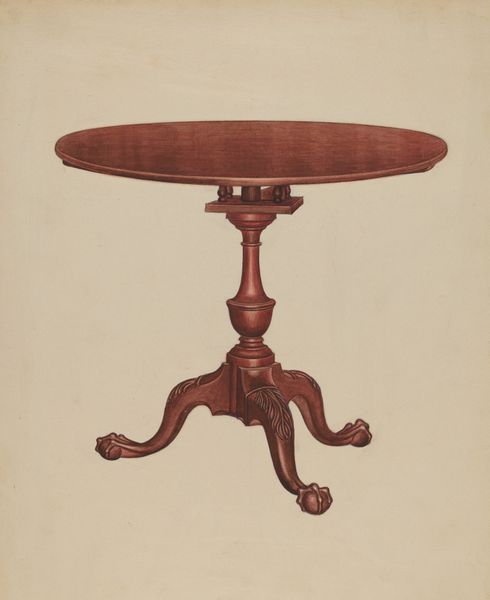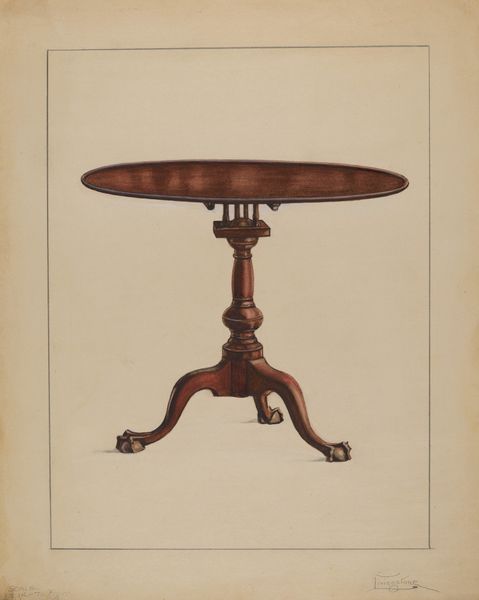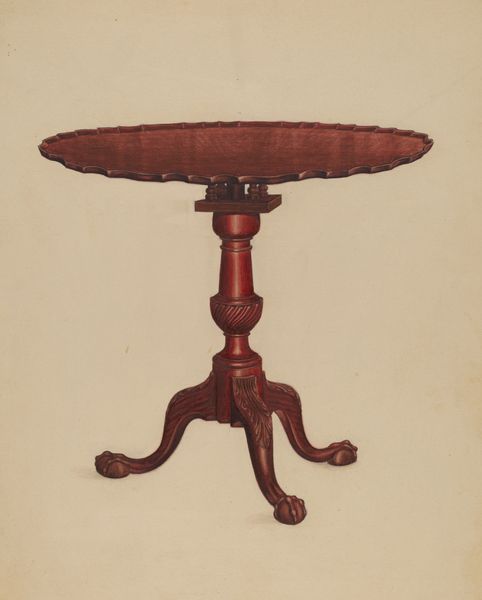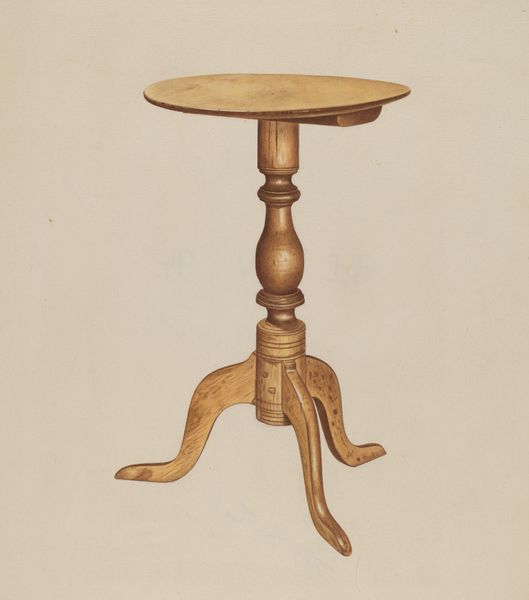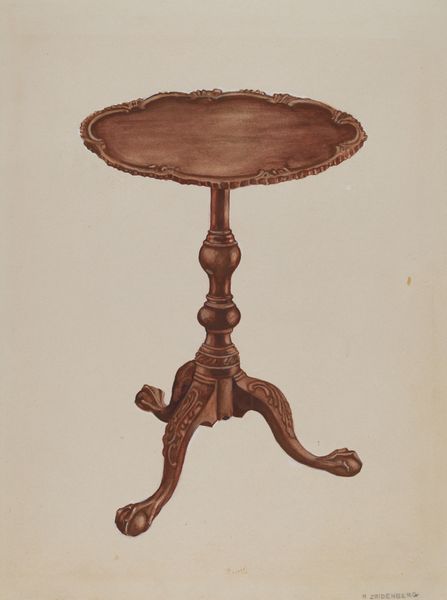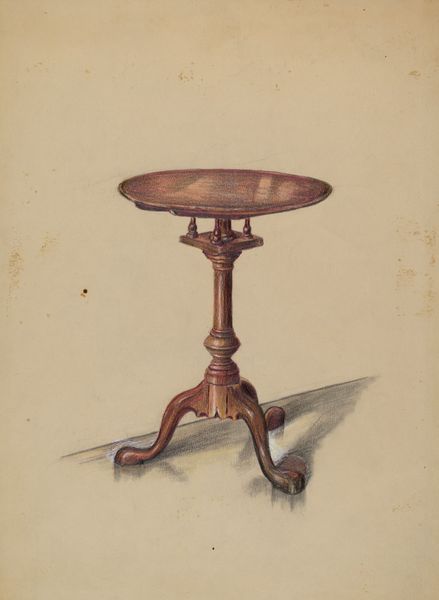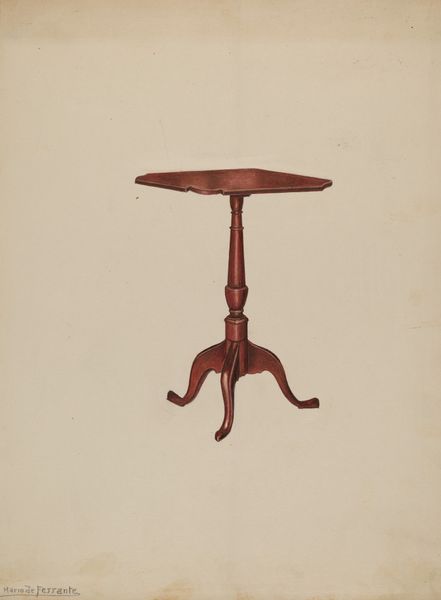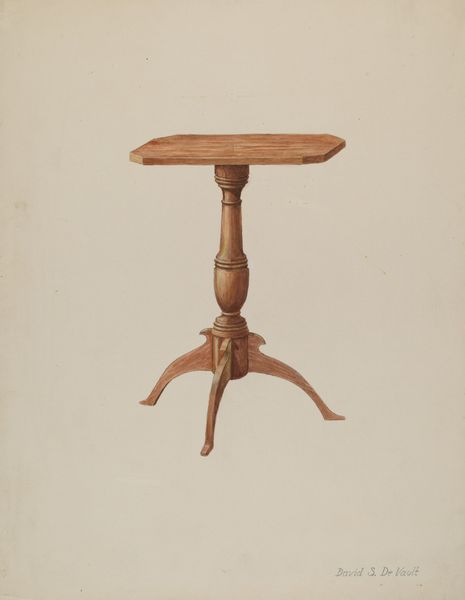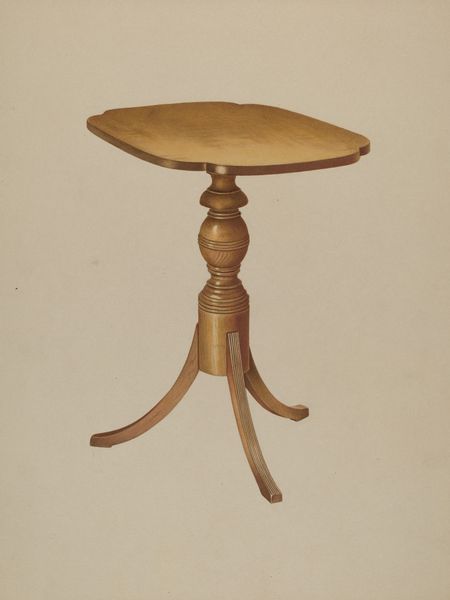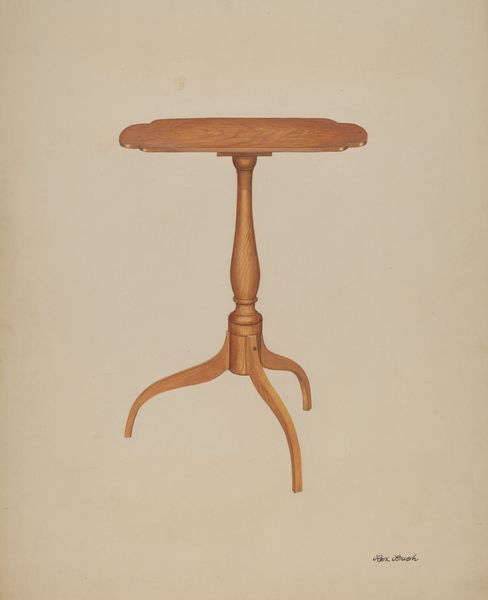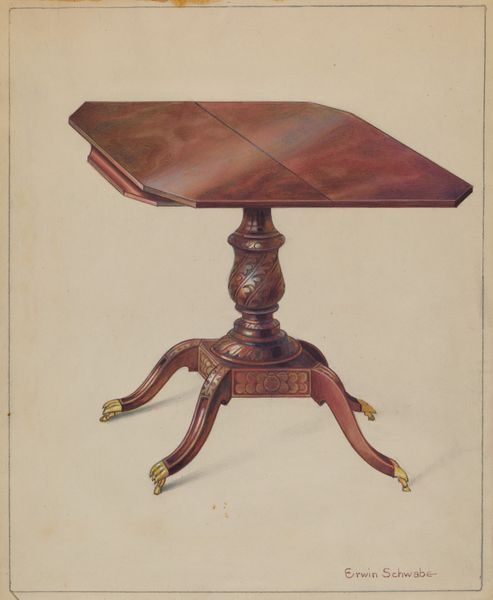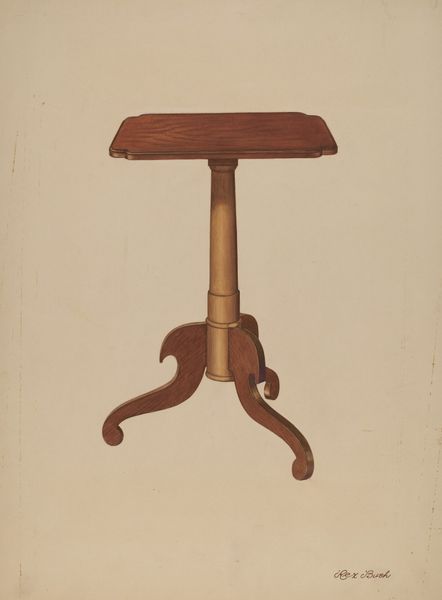
drawing, coloured-pencil
#
drawing
#
coloured-pencil
#
coloured pencil
#
geometric
#
watercolour illustration
#
decorative-art
Dimensions: overall: 29.2 x 23 cm (11 1/2 x 9 1/16 in.) Original IAD Object: 29"high; 31 1/2"in diameter-top
Copyright: National Gallery of Art: CC0 1.0
Editor: Here we have Arthur Johnson’s "Tripod-table", drawn around 1936. It’s a simple colored-pencil rendering, but I’m struck by the formal quality: the geometric shapes forming a practical, yet ornate object. How do you interpret this work? Curator: It's interesting how this seemingly straightforward depiction can reveal a tension between utility and status. While representing a functional object, the choice of decorative art style highlights class aspirations and perhaps the complicated social hierarchies of the time. Do you notice anything particularly revealing about its ornamentation? Editor: The claw feet are really interesting, sort of animalistic yet contained within this rigid geometric structure. Almost like tamed power. Curator: Precisely. This controlled, stylized naturalism speaks to the dominant ideology’s need to harness and organize the natural world for its own purposes. Consider how this relates to contemporaneous power structures—who benefits from such "taming"? Does this drawing reinforce or subvert these power dynamics through its careful artistry? Editor: That’s a compelling point. It makes me think about design itself as a kind of social commentary. Even a table isn’t neutral, it reflects societal power. Curator: Exactly! Recognizing this can give us tools to analyze other seemingly benign design elements as reflective of the culture that produces and consumes them. How might thinking about gender and class inform your view of this work? Editor: Now that I think of it, such furniture was usually a product for and of a certain wealthy, white, demographic… The attention to detail and aesthetic certainly speaks of their values and sensibilities. Curator: Precisely, questioning such assumed normalcy lets us view design objects not merely for function but also as encapsulations and enactments of ideology. Editor: I never considered decorative arts could contain such complex societal conversations, but I understand how art can tell more than what it literally depicts now.
Comments
No comments
Be the first to comment and join the conversation on the ultimate creative platform.
